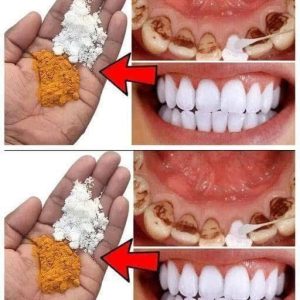White paint on tree trunks is not about aesthetics or decoration. It is a thoughtful, protective measure used by gardeners, arborists, and city planners alike to safeguard the tree from environmental stress. It communicates something important about the tree’s health and serves a very specific biological function.
Tree Markings: What They Mean
If you’ve ever walked through a park, orchard, or city street, you’ve probably seen more than just white-painted trunks. Trees often wear other markings, each with a different meaning. Bright orange dots usually indicate that the tree is scheduled to be cut down or removed. Purple markings might signal private property, areas where work is restricted, or “no trespassing” zones.
In contrast, white paint is a preventative tool, a way to protect living trees from damage, particularly from the harsh conditions of winter. While other markings communicate administrative or legal information, the white coat is a form of care, a signal that someone is actively looking after the tree’s well-being.
Winter’s Hidden Threats to Trees
Trees are remarkable in their ability to endure seasonal changes, but winter is particularly harsh. The combination of bright sunlight during the day and freezing temperatures at night can create a dangerous cycle for tree trunks.
Here’s what happens: during sunny winter days, the bark on a tree trunk absorbs heat and begins to expand. But as soon as night falls, the temperature can drop dramatically, causing the bark to contract quickly. This constant expansion and contraction puts stress on the trunk. Over time, it can lead to cracks, splits, and even serious damage to the inner layers of the tree, including the cambium, which is responsible for transporting nutrients and water.
This phenomenon, known as sunscald, is particularly common in young or thin-barked trees. Even older, established trees are not completely immune. Left unchecked, sunscald can compromise a tree’s health, making it more vulnerable to diseases, pests, and decay.
White Paint as a Natural Sunscreen
This is where white paint comes in. By coating the trunk with a reflective white layer, planters can essentially give the tree its own sunscreen. The paint reflects sunlight away from the bark, preventing it from heating up too quickly during the day. When night falls, the bark cools more gradually, reducing the stress caused by rapid temperature fluctuations.
In essence, the tree becomes better equipped to survive winter without cracking or splitting. It’s a simple, low-cost, and effective way to protect the tree — a practice that gardeners have relied on for centuries. Think of it as a tiny shield against one of nature’s most overlooked threats.
The Science Behind the Practice
The practice of whitewashing trees isn’t just a modern trick. Historically, farmers and orchardists used lime-based mixtures to protect fruit trees in winter. The technique has been passed down through generations because it works. Modern arborists often use water-based latex paint instead, which is safe for the tree, easy to apply, and environmentally friendly.
Dilution is key. Typically, the paint is mixed one-to-one with water. This creates a thin, even coating that spreads easily and adheres to the bark without smothering it. Too thick, and the paint could trap moisture against the trunk, leading to mold or rot.
How to Paint a Tree
For those curious about how it’s done, applying white paint to a tree is surprisingly straightforward. A brush works well for small trees or detailed work, while a sprayer can cover larger trunks quickly and evenly. The goal is to coat the lower portion of the tree — usually the first two to four feet — which is most exposed to sunlight and potential damage.
It’s important to apply the paint when the tree is dormant and the bark is dry. Avoid painting during freezing conditions, as this can trap ice in the bark and cause additional problems. Once applied, the protective layer typically lasts through the winter and can be reapplied annually to maintain its effectiveness.
A Small Step with Big Impact
Learning the reason behind white-painted trees changed the way I viewed the landscape around me. Something as simple as a coat of paint can make a huge difference in a tree’s health and longevity. It’s a quiet form of stewardship, a reminder that the natural world often thrives through small, thoughtful actions.
Beyond protection, white-painted trees also make it easier for arborists to spot issues like pest infestations, bark damage, or disease. The stark contrast of the paint against natural bark highlights irregularities that might otherwise go unnoticed. In this way, white paint serves both a protective and diagnostic function.
Why It Matters Today
In urban areas, trees face additional challenges beyond winter temperature swings. Pollution, soil compaction, and human activity put extra stress on trunks and roots. Whitewashing young trees in cities is a simple, low-cost way to give them a head start in surviving harsh conditions.
Even in orchards, where fruit production depends on the tree’s health, white paint helps ensure consistent growth and strong yields. For young saplings, the practice is particularly critical, as thin bark is far more susceptible to cracking. By protecting these vulnerable trunks, gardeners can nurture trees into strong, resilient adults.
Beyond Protection: A Symbol of Care
White-painted trees also carry a subtle symbolic meaning. When you walk past a tree with a freshly coated trunk, you’re witnessing evidence of human care. Someone took the time to protect that tree, anticipating potential dangers and acting preemptively. It’s a quiet reminder that even in a busy world, thoughtful attention can have a lasting impact.
The next time you pass a white tree trunk, it’s worth pausing to consider the invisible work that goes into its survival. It’s not about aesthetics or decoration — it’s about nurturing life, preventing harm, and honoring the slow, steady growth of nature.
A Tradition That Continues
The whitewashing of trees is a practice that spans cultures and centuries. From European orchards to North American city streets, gardeners have recognized the value of protecting their trees against environmental extremes. Modern arborists continue the tradition with updated materials and methods, but the principle remains the same: prevent damage before it occurs.
And the lesson extends beyond trees. In a world where we often react to problems after they arise, white paint reminds us that small, preventive measures can make all the difference. Sometimes the simplest actions — whether for a tree or in our own lives — are the most effective.
Conclusion
So, why are some trees painted white? It’s not for looks. It’s a practical, time-tested way to protect the tree from sunscald, temperature fluctuations, and winter stress. The practice combines centuries of wisdom with modern horticultural science, offering a low-cost, environmentally friendly method for preserving tree health.
Next time you see a tree with a white trunk gleaming in the winter sunlight, remember: it’s not just a quirky feature or a random choice. It’s a small, deliberate act of care that helps our leafy friends thrive, season after season. Something as simple as a coat of paint can protect a tree’s future — and perhaps even teach us a lesson about the quiet power of attention and prevention.





